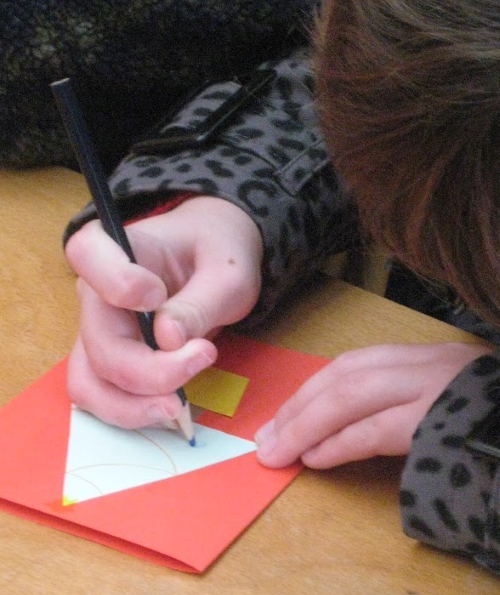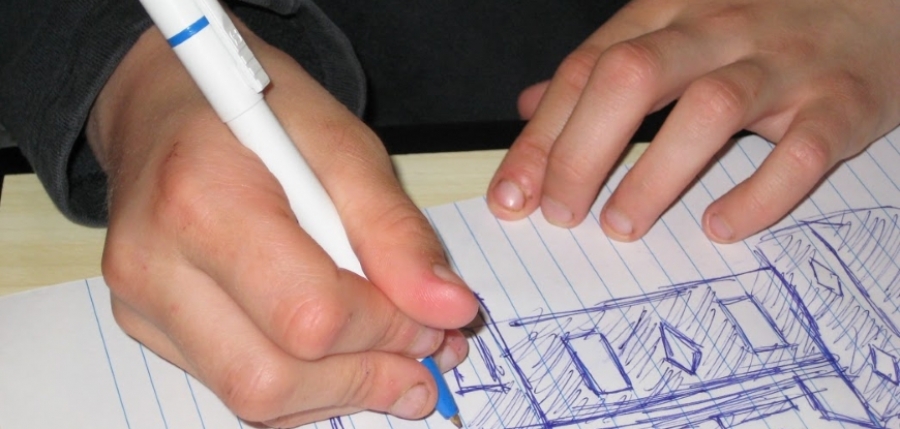Dyspraxia is a much missed and misunderstood condition. Also known as developmental coordination disorder (DCD), dyspraxia is a lifelong condition affecting gross and fine motor coordination. These difficulties make it hard for individuals to carry out everyday activities that others take for granted including writing, riding a bike, using cutlery and walking up stairs. The condition can also affect organisation, planning, time management and speech. The lack of awareness is surprising given that according to UK research, dyspraxia affects around 5% of school-aged children, 2% to a severe degree – that’s at least 1 child in every classroom. By comparison, autism, which affects around 1% of school-aged children, has a much higher public profile.
Confusion about terminology may be partly to blame for the poor awareness and understanding. In education, the term dyspraxia is used to describe a specific learning difficulty affecting the planning and organisation of movement. The term preferred by health professionals however is ‘developmental coordination disorder’, or DCD. Unlike dyspraxia, clear criteria for the diagnosis of DCD are described in the ‘Diagnostic and Statistical Manual of Mental Disorders’, a classification system published by the American Psychiatric "The term preferred by health professionals is ‘developmental coordination disorder’, or DCD."Association and used internationally by researchers and clinicians. Many parents and adults dislike the term DCD however, as it detracts from the wider difficulties that people with poor motor coordination often experience. In the UK the terms dyspraxia and DCD are often used interchangeably. The same approaches apply whichever term is used to describe the condition. The important thing is to match the intervention or strategy to the needs of each individual.
Top of my list of strategies to support the performance of students with DCD/dyspraxia is good seating. Young people with DCD/dyspraxia often have poor core stability and can be seen leaning forward over the table, propping their head with their hand, sitting on their knees or even standing to write. Such postures restrict students’ ability to support the paper and to control their pencil pressure and writing fluency. Providing a chair that is the correct height and enables a student to sit with their bottom back and their feet firmly planted on the floor can lead to marked improvements in their posture, handwriting and fine motor control. Providing a foot step can be a cheaper alternative to a new chair, but the step must be heavy and firm so that children feel grounded and secure. Good seating can also improve attention and learning, enabling students to focus on the lesson rather than their sitting position.
Next on my list is the introduction of a gross motor skills programme for students with a diagnosis of DCD/dyspraxia and for those with poor motor coordination skills who don’t yet have a diagnosis (advice from a health professional should be sought for those with other known conditions such as cerebral palsy before they are included in such programmes).
Class-based exercise programmes exist in some schools already, but students with DCD/dyspraxia often struggle to keep up so their benefits may be limited. Some commercially-available motor programmes designed to develop fundamental movement skills in students with DCD/dyspraxia are available (eg BEAM, Smart Moves) and many occupational therapy or physiotherapy teams provide support to schools wishing to introduce them. Several short (eg 15 minutes) sessions per week are better than one longer session or the results will be similar to going on a diet on Tuesdays; there will be a benefit, but it will take longer to see an impact. Some of the activities and exercises from these programmes can be incorporated into PE sessions.

Poor handwriting is a key characteristic of DCD/dyspraxia, and children often lack the strength to stabilise their upper limbs and the fine motor control to grip and move a pencil. Poor pencil grip is one of the most frequent problems identified in children with DCD/dyspraxia, and it’s important that fundamental fine motor skills are established before focusing on letter formation and sentence structure. Children with DCD/dyspraxia will benefit from a fine motor programme focusing on hand and wrist strength, finger isolation, pincer grip and ability to use two hands together. The programme can be supported by inclusion of fine motor activities into a child’s daily routine at home and at school.
When a child is ready for writing, a writing slope can improve motor fluency and pencil control by promoting good posture and putting the wrist into a better position for dynamic pencil control. A range of writing tools should be made available to the individual including chunky triangular pencils which are often easier for students to grip. As an occupational therapist, I encourage young people to experiment with a range of pencils, grips, scissors, rulers and other tools to identify the ones that suit them best. Sometimes adults worry that using alternative tools will highlight a students’ differences; in my experience however, young people often feel that the benefit of such tools outweigh "Strategies to mediate these difficulties can be very effective"their disadvantages and they are motivated to use tools they have chosen themselves. The key is to empower young people by involving them in the decision to choose and use alternative equipment or strategies, rather than imposing these tools without consultation.
Poor motor coordination is the most obvious symptom of DCD/dyspraxia, but many students experience a range of additional hidden difficulties including poor organisation, time management and planning skills. These can have a serious negative impact on a student’s performance and their self-esteem. Fortunately strategies to mediate these difficulties can be very effective and need not be costly. Adjustments include providing visual reminders about task instructions; creating equipment checklists for the end of the school day; breaking tasks down into component parts to help students plan their work; using clips so that books open at the relevant page; minimising distractions when giving verbal instructions and buddying up with a more able student who can model good organisational skills. These small changes can boost a student’s confidence and achievement.
Perhaps the most important recommendation of all is to raise awareness of DCD/dyspraxia and its impact on motor and non-motor skills within schools. Increased awareness will help staff recognise the challenges and potential of students with DCD/dyspraxia and should include recommendations to develop students’ skills and adjustments to support their performance across the curriculum.
Students with DCD/dyspraxia work very hard to manage their motor and non-motor difficulties and to demonstrate their potential in the classroom. It is essential that their efforts are recognised and that early intervention is provided to develop the fundamental movement and organisational skills students need to manage more complex activities as they grow older. It is also important that young people and their teachers recognise that there is a reason for a student’s difficulties and that appropriate strategies are implemented to facilitate their performance. Being aware and resourceful will bring benefits to both students with DCD/dyspraxia and their schools.
Do you work with Dyspraxic students? Share your experiences below.


















